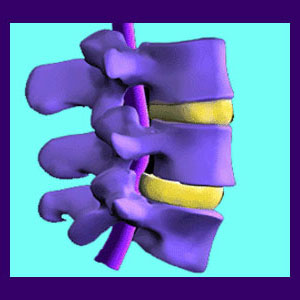
Spinal dislocation is a misleading term, since it can refer to many possible conditions, including subluxation, fracture or spondylolisthesis. The word dislocation is used by many different types of diagnosticians, with each application having a different meaning from the next. This can be very confusing for any patient who has been diagnosed with a dislocated vertebra or displaced spinal structure.
Dislocation always refers to an anatomical part being out of its normal and proper positioning. However, the reasons why the anatomical part might be displaced vary greatly, as do the degrees of dislocation.
This discussion seeks to clarify the diagnostic conclusion of a dislocated spine by detailing all the possible instances where the terminology might be utilized by a physician or complementary caregiver. Furthermore, we will examine the effects of various types of vertebral dislocations to assist patients in better understanding the true nature of their conditions.
Types of Spinal Dislocations
The conclusion of vertebral dislocation might be made by many types of doctors, including internal medicine practitioners, orthopedists, physical therapists and chiropractors. Each of these caregivers might use the term to describe a different condition, possibly confusing the patient or even misleading them to believe that they suffer from a completely different structural problem, depending on their previous knowledge of the word “dislocation”.
In our many years of providing patient advocacy for chronic pain sufferers, we have seen the word dislocation cited in patient correspondence to describe many completely different conditions, including any and all of the following anatomical issues:
Patients who demonstrate spondylolysis, and especially those with resulting spondylolisthesis, are sometimes said to have displaced, misaligned or dislocated vertebrae. Spondylolisthesis does describe a change in the proper and typical positioning of a vertebral bone in the horizontal plane. Cases might be congenital or developed due to the previously mentioned joint defect called spondyloysis.
Vertebral subluxation is a common chiropractic term that is rarely used by physicians. In cases of chiropractic subluxation, the patient is often said to have a minor dislocation of a vertebral bone. Demonstration of chiropractic subluxation is usually incredibly subtle and many physicians argue that such misalignments do not even exist. However, some physicians and physical therapists use the term subluxation to describe a complete dislocation of a vertebral structure, such as in the case of a bone moving completely out of alignment with the remainder of the spine, often without the presence of an identifiable fracture to explain the event. This can be terribly confusing for any affected patient, since although the terminology is identical; the meaning is really very different in terms of potential consequences.
Vertebral fracture often causes bones to lose proper spinal positioning and this condition is also typically referred to as vertebral displacement or dislocation. Fractures can cause the spinal joints to misalign and in extreme cases, can even be responsible for causing the vertebral bodies to lose alignment.
The most severe cases of atypical spinal curvature can cause side-to-side or front-to-back vertebral dislocation. In most instances, spinal curvatures that are this severe are considered pathological and might create areas of spinal instability, often necessitating surgical spondylodesis interventions.
Spinal Dislocation Effects and Treatments
Each diagnostic interpretation of vertebral dislocation will mean something different for the affected patient. Therefore, correctly understanding the exact implications of each diagnostic conclusion is crucial.
Most mild to moderate spondylolysis and spondylolisthesis cases are asymptomatic and should not produce pain or neurological deficits. Grade 3 and 4 spondylolisthesis scenarios might be pain generators and might also cause or contribute to spinal instability in worst case scenarios. Treatment for spinal misalignments range from none to conservative care to surgery; usually involving large fusions that are reinforced with metal hardware for structural support.
Patients with chiropractic subluxations are said to require a manipulative adjustment in order to improve spinal alignment and resultant general health and neurological functionality. While this idea represents the universal and primary philosophy of the chiropractic profession, it is not embraced by most physicians, who report that spinal manipulation is not necessary or effective, since it does not create any objective positive change to the vertebral anatomy.
Vertebral fracture comes in many severities and therefore might cause a wide range of potential effects ranging from no ill consequences to sudden death. Minor fractures might require no specific treatment and may only cause minor pain. Some compression-type fractures cause no symptoms whatsoever. Other fractures might be more serious and may require open reduction or fixation in order to restore proper spinal function or stability. The worst fractures might create paralysis conditions, such as tetraplegia or paraplegia, and may even lead to death.
Finally, severe atypical spinal curvatures, such as scoliosis, hyperlordosis and hyperkyphosis can all cause wide-ranging symptoms, including pain and nerve dysfunction, regardless of where they occur in the spinal column. Any curvature that is extreme enough to cause a dislocation will usually necessitate surgical fixation using vertebral fusion surgery.
Dislocated Spine Clarification
Hopefully, this essay has clarified the use of the diagnostic terminology spinal dislocation as it is commonly applied to the human vertebral column. Patients who have been diagnosed as suffering from a vertebral body dislocation, or a vertebral joint dislocation, are strongly encouraged to speak to their doctors to further crystallize the exact nature of the diagnostic verdict and the potential implications to their particular lives.
We at The Cure Back Pain Network discourage the professional use of the diagnostic term “dislocation”, except in circumstances in which it objectively applies, such as those caused by severe fractures, cases where a vertebra is clearly and objectively moved out of alignment due to acute trauma, or objective and verifiable vertebral misalignment concerns. However, even in these circumstances, there are always more accurate and narrow diagnostic terms that can and should be applied, replacing the use of the confusing term “dislocated” altogether.





